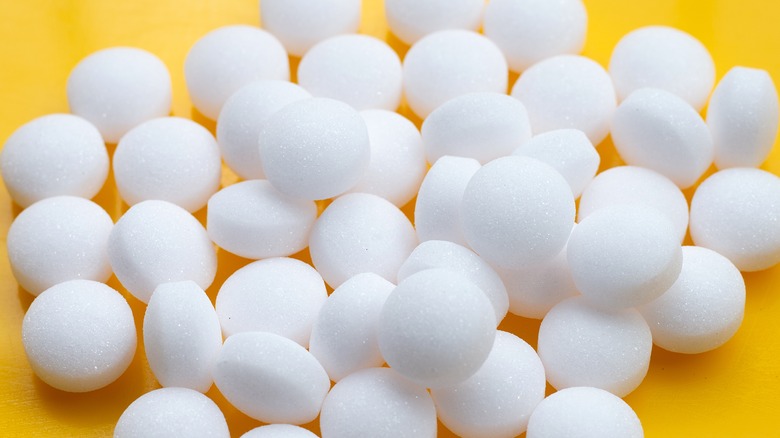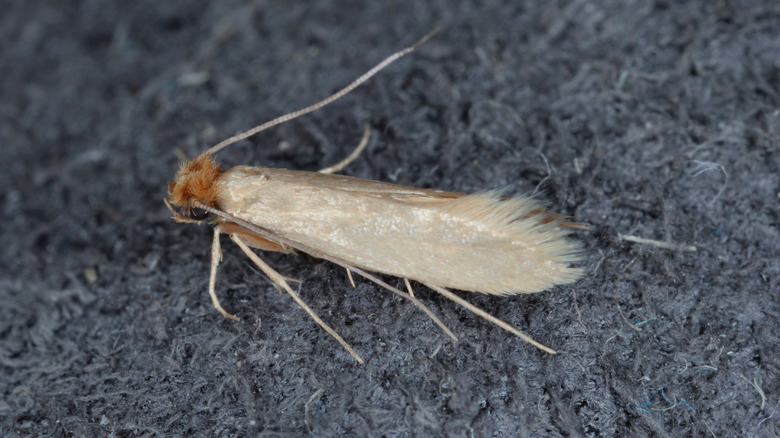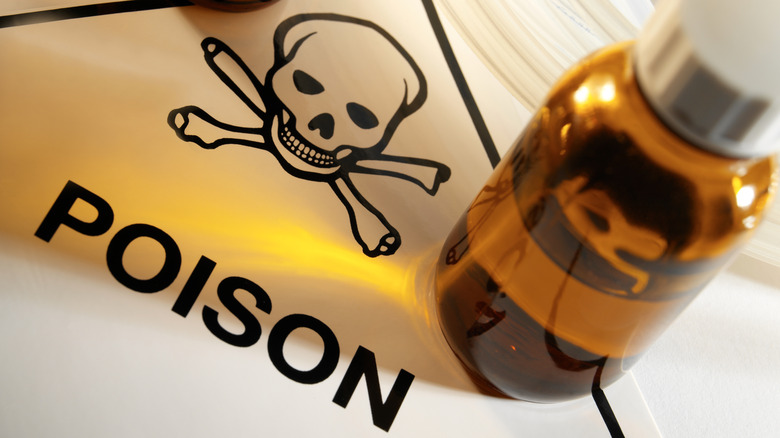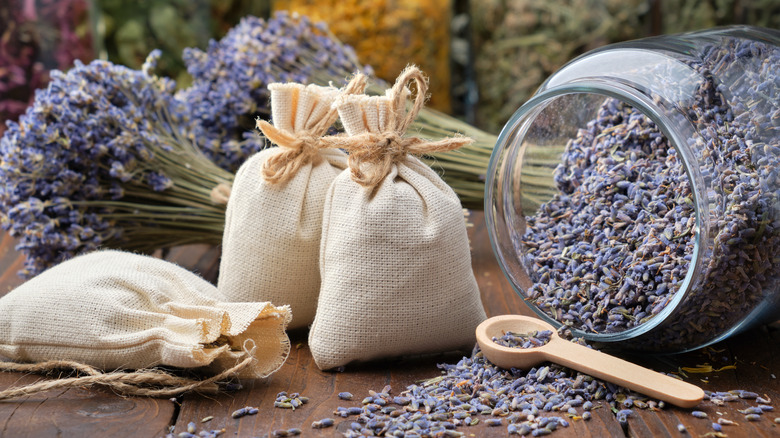Why You Should Stop Using Mothballs Immediately
The expression, "to put in mothballs," refers to deferring something indefinitely. Actually, the use of mothballs themselves should be deferred, perhaps even permanently. Designed to be toxic only to moths and other textile pests, the insecticide can actually harm humans and pets, target wildlife, and contaminate the environment. Damaging health effects caused by this household product do not paint a pretty picture, according to the National Pesticide Information Center. Inhaling, ingesting, or even touching it can bring on the usual poisoning suspects of headaches, nausea, dizziness, and vomiting. A sufficiently concentrated exposure can cause anemia by damaging one's red blood cells, and infants have been similarly affected just from wearing tainted clothes.
The two main mothball ingredients are regulated in the United States by the EPA but can't even be sold in some states. They are also banned in the UK. There are imported mothballs that skirt regulation, are possibly illegal, and whose risks may be even more pronounced. Additionally, mothballs might pose a fire hazard as they are flammable, notes the Internet Center for Wildlife Damage.
Mothballs are dangerous to humans too
Mothballs are meant to kill clothing moths (Tineola bisselliella), their larvae, and their eggs, but humans can be collateral damage. The active ingredient of the pesticide is one of two potent and volatile chemicals: naphthalene or paradichlorobenzene. They are sold as balls, flakes, cakes, crystals, or blocks redolent of the familiar camphor odor. If you can smell it, you're inhaling the toxins. Naphthalene has been classified as a pesticide since 1948, as per a Florida Department of Agriculture brochure. It is derived from fossil fuels, such as coal tar and crude oil, and is a possible carcinogen. It is even contained in second-hand tobacco smoke.
Mothballs do their dirty work through a process known as sublimation. They are solid but transform into vapor at room temperature. Living With Bugs presents this dilemma: In order to work, the vapor must be highly concentrated, but this potency makes it potentially harmful to humans. An airtight container must be used; otherwise, harmful fumes will be released (and the pesticide will be less toxic to its actual target). Children may even mistake the candy-resembling poison ball for a treat.
Mothballs are used improperly
Carelessly allowing fumes to escape is just one mistake. Mothballs are meant for moths only, and people foolishly use them to repel mammals, snakes, and other insects such as cockroaches, as pointed out by the Louisiana Department of Health. Chemical mothballs will also slay bees and butterflies, and indiscriminate use can harm fish and mollusks. Putting loose mothballs at the bottom of drawers is another no-no, as is dissolving them and smearing them on your clothing.
Mothballs must be properly stored in a closed and airtight container and never used outdoors. They should also never be disposed of in drains, whether indoors or out. Always use latex or rubber gloves when handling them and don't overdo it. The number of mothballs used should be limited by the volume of the treated area, and you should always refer to the instructions on the packaging when determining how many to set out. Finally, poisoning by mothball is no joke. Experts at Mount Sinai Hospital describe a lengthy recovery, and convulsions or coma can occur in extreme cases. Poison control should be contacted immediately if you suspect mothball poisoning.
Use these instead
Throw those smelly, toxic mothballs away! There are several more benign solutions to your moth problem. Nourished Essentials suggests using sachet bags in which to store natural alternatives. Red cedar shavings and fragrant spices or herbs that repel moths can be effective. Lavender, rosemary, thyme, spearmint, and cloves also work well to deter moths. Place a packet in each clothing drawer and change it every season to maintain freshness and effectiveness. A moth trap with a pheromone-infused strip can be used as well. The idea is to attract sexually active male moths in order to disrupt the breeding cycle. Foggers and sprays dispensing natural ingredients are other safe options, and cedar mothballs are available as well.
Here is one more reason to question the use of mothballs and substitute with a safer alternative. According to Moth Prevention, adult moths learn to recognize the telltale fumes and will simply stay away and make themselves at home elsewhere. That being said, should you insist on using old-fashioned mothballs, make sure to unpack the fumigated item in a well-ventilated area. Living With Bugs points out that dirty clothes are more apt to harbor moth eggs and larvae, so be sure to wash them first. You should also wash them again before the next use.



